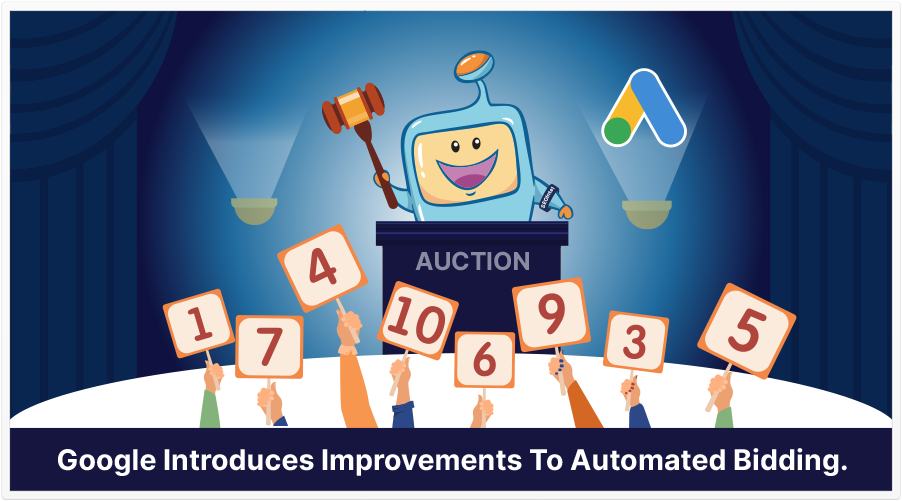
If you’re reading this, you’re probably aware of what Display & Video 360 is: Google’s TV and audio advertising solution that’s part of the Google Marketing Platform.
Automated bidding, which is a feature of Display & Video 360, lets you optimize some of your bids so that you can predict the likelihood of a conversion.
The news is that, recently, Google introduced 3 improvements to the automated bidding feature.
Custom Bidding Requires Less Technical Know-How
Ah yes, one thing that has hampered non-techy marketers for years: seeming lack of technical know-how. In this case, it would be the lack of knowing how to code or build a script.
That was the custom bidding reality…until now. (Granted, you might still need to know a little bit of code, but at the very least, the requirement to do so seems to be reduced.)
Pay-Per-View for Branding Campaigns
Basically, this allows you another payment methodology for funding your campaigns–in this case, branding campaigns.
Bidding Insights: A New Type of Report
Google has been listening to customer feedback, and one thing marketers wanted to learn was how bidding insights was actually working in their campaigns. I think they knew the basic mechanics, but wanted to see the proof–the data–of how it was working in real life.
(That said, it does take about 7 days and the accumulation of a sufficient amount of data, before this report is available.)
That’s the purpose of Bidding Insights–to give you an overview of how many of your impressions are leading to conversions, as well as other significant automated bidding data.
More Data Can Lead to Greater Insights…If You Can Connect the Dots
About a couple of weeks ago, I wrote a news item that talked about Google Data Studio. In addition to Data Studio, the article talked about something called blended data, which is the blending of data from different sources (Google products), done so in such a way that you get a more representational picture of what’s going on.
Well, if you’re using various sources of data (various Google products such as Analytics and Search Console), you can combine that data with the data from Display & Video 360 so that you get a bigger picture of things.
I like to use the metaphor of connect-the-dots activity sheets for kids: you see a bunch of seemingly random dots (data), and the more dots you can connect together (more data sources), the more a picture comes into view. That’s the effect of blended data.
Of course, people who are passionate about data will have a field day with this, but if you’re not so keen about numbers, this might seem a bit overwhelming for you. Hopefully, you and a few members of your team can learn these platforms over time, because the insights you get can be quite revealing.
You can discover demographic insights, perhaps what genre of shows your most responsive viewers like, what time of day is best to advertise, psychographic information, what to avoid…the things you can learn are practically endless.
You just have to see the value in what you can learn from Display & Video 360, and be willing to learn that platform.
Source: The Keyword Google Blog